6 conclusions from the men's Strade Bianche
Van Aert's first Classic, unfamiliar weather, luck of the stars, and more
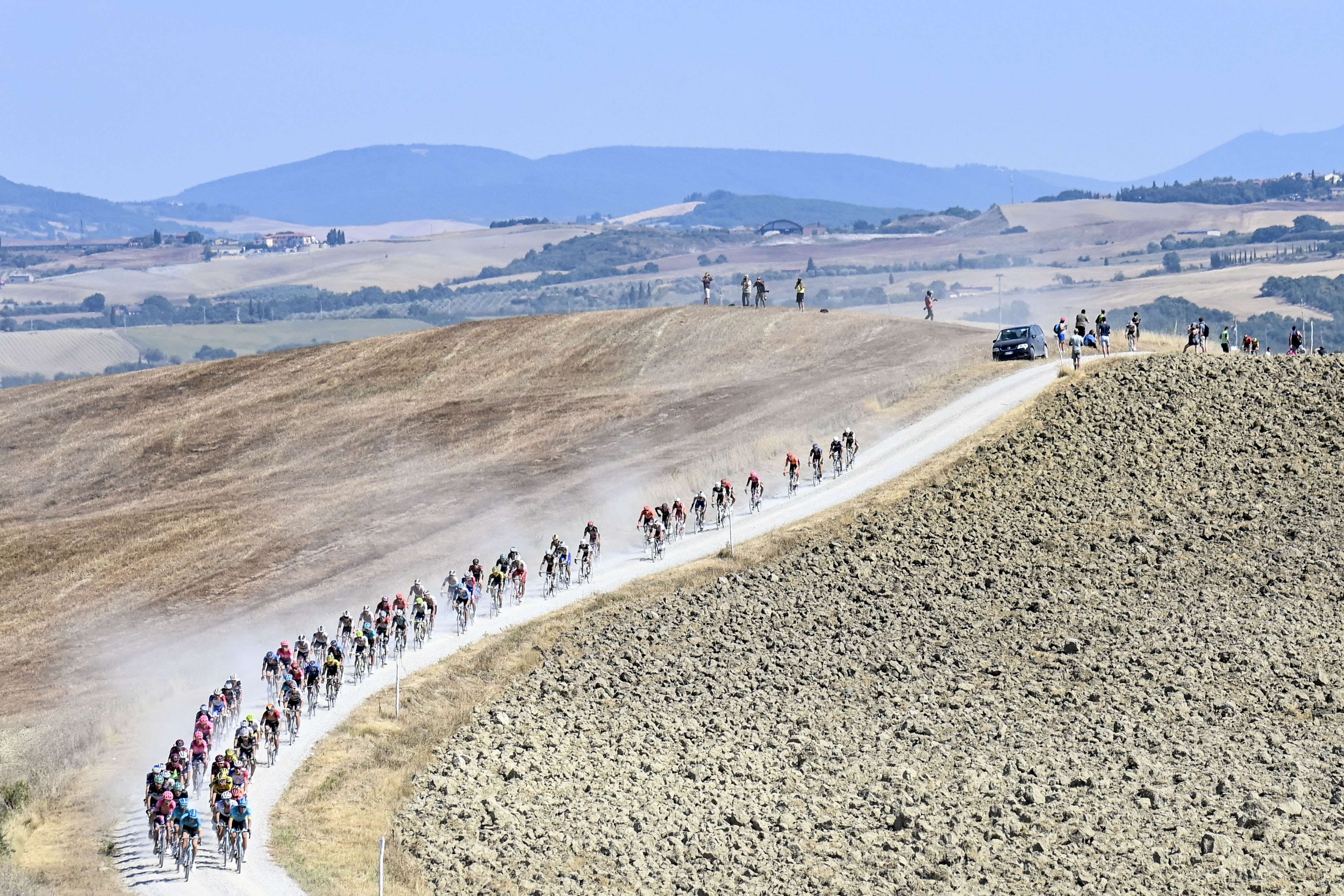
Like the women's race earlier in the day, or at least what we saw of it, the men's Strade Bianche reintroduced us to WorldTour racing in spectacular fashion.
In the blistering heat among the hills and valleys of Tuscany, Jumbo-Visma's Wout van Aert eventually prevailed to take his first major Classic win. The race had earlier blown up on the gravel with over 50 kilometres to go, with a number of pre-race favourites falling by the wayside for myriad reasons.
While Astana leader Jakob Fuglsang seemed keen to display his strength after taking second in 2019, a more measured, calculated ride from Van Aert saw him largely hold back for one big move that turned out to be the winning one.
Both Van Aert's performance and those big names misfiring are among our main talking points from Saturday, but after such a memorable race, they're far from the only ones. Read on for Cyclingnews' 6 conclusions from a thrilling 2020 edition of Strade Bianche.
Misfortune of the stars
While the lead group that contested the finale of the race wasn't exactly short on stars, with winners of the Tour of Flanders, Liège-Bastogne-Liège and Paris-Roubaix there along with Grand Tour stage winners, the race was also notable for those big names who weren't around to fight for the top placings in Siena.
There was plenty of bad luck, of course, with the rough gravel roads chewing up tyres and breaking wheels, but the blistering heat and 'first day back' factor also played into the absence from the sharp end of the race of several expected contenders.
Peter Sagan (Bora-Hansgrohe) was a DNF after puncturing at least once, while Vincenzo Nibali (Trek-Segafredo) hurt his hand in a fall and later abandoned. The winner of the 2011 edition, Philippe Gilbert (Lotto Soudal) suffered a puncture and several bike changes en route to 25th.
Get The Leadout Newsletter
The latest race content, interviews, features, reviews and expert buying guides, direct to your inbox!
Julian Alaphilippe (Deceuninck-QuickStep) – winner last year and 24th this time – changed bikes three times and suffered no fewer than six punctures, including one just as the winning move was being made on the Monte Sante Marie sterrato sector. Fifteenth-placed rider Mathieu van der Poel (Alpecin-Fenix) punctured shortly before the same gravel section, and later said that expending energy to chase back in the heat left him unable to follow that decisive split.
You only need to read the stories of these big-name riders to tell how tough Strade Bianche was, and there are no doubt many more where they came from among the rest of the just 42 finishers who persevered where over 100 more couldn't.
Van Aert's first Classic
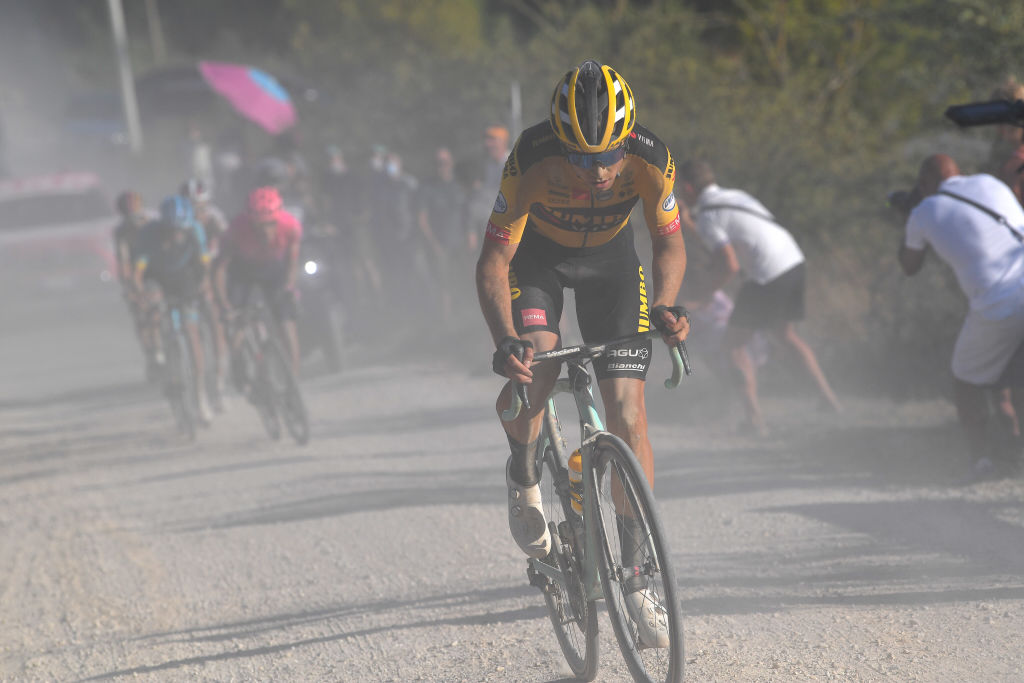
Like his eternal 'cross rival Mathieu Van der Poel, Wout van Aert hadn't raced a full road season before 2019. And while 'VDP' won two big Classics last spring, Van Aert has had to wait a little longer to get on the board after a number of near misses.
On his Strade Bianche debut in 2018, he finished third, memorably cramping on the ascent up the Via Santa Caterina into Siena. Last year, he was third again, and weeks later he just missed out to Deceuninck-QuickStep's Zdenek Štybar at the E3 BinckBank Classic.
This time around, however, Van Aert was not to be denied in Tuscany. The Jumbo-Visma man went largely unnoticed until the decisive split was made on the Monte Sante Marie, 50km from the line. He'd later stay calm when Jakob Fuglsang (Astana) went off the front, and was the only rider alert enough to follow Bora-Hansgrohe rider Max Schachmann's surprise attack at 21km to go.
The 25-year-old saved his energy wisely, too, so that when he launched on the final sterrato sector of Le Tolfe, there was no answer from behind, and it never looked like his lead was in too much danger thereafter. Yes, Van Aert has registered big wins at the Dauphiné and Tour de France, but the Classics are where we've all been waiting to see him shine – and shine he did on Saturday. Roll on October.
New dates, new weather
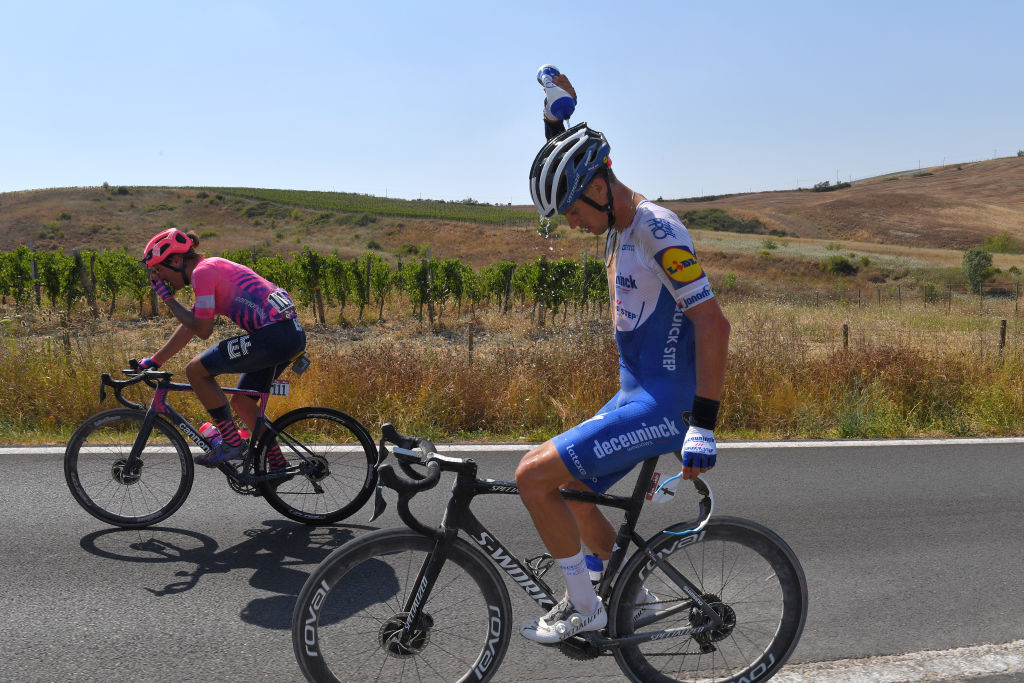
With much of the spring and summer season postponed or cancelled due to the COVID-19 pandemic, any rescheduled races were always going to take place in unfamiliar conditions. An August Strade Bianche – while it's normally held in early March – was always going to be a unique challenge.
On the day, temperatures soared to the mid-30s (the mid-90s in Fahrenheit), a full 20°C (35°F) above those experienced at the 2019 race. That heat clearly had an effect on the race, with Saturday seeing the lowest number of finishers since the inaugural edition all the way back in 2007.
We'll undoubtedly see unfamiliar weather at other races over the coming months, too, with the spring Classics coming in October, the Tour de France in September, and the Vuelta a España running into November.
It remains to be seen how the different climactic conditions will affect races over the coming months, but rain on the cobbles and a far more tolerable three weeks in Spain look like distinct possibilities.
A recalibration for Formolo
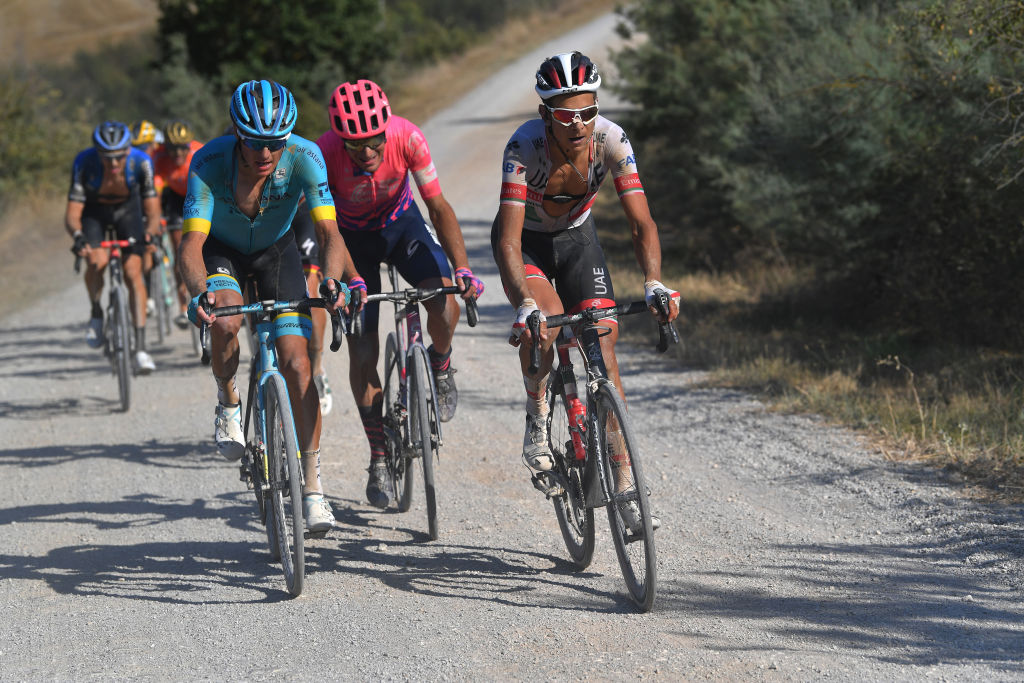
Back in 2015, as the Italian Cannondale team merged with Jonathan Vaughters' Garmin-Sharp, the American said of his new charge, a then-22-year-old Davide Formolo: "In the future, he will win the Giro d'Italia. No doubt."
Five years later, the Veronesi has two Giro top 10s and a ninth in the Vuelta to his name. While he is certainly a talented mountain climber (podium places at the Montevergine di Mercogliano and Antholz to his name in the last two Giri), he is quickly building a case to be considered a Classics man first and foremost.
At the last two editions of Liège-Bastogne-Liège, he has finished seventh and second, while last June he sensationally won a hilly Italian road race title, making a move 60km from the line, later attacking again and riding the final three laps alone.
His recent autumn Classics campaigns have been less promising, with two 23rd places at Il Lombardia – a race which would otherwise seem to suit him well – coming in 2018 and 2019, although racing the Giro-Vuelta double each year might have something to do with that.
Last December, Formolo said, "For the Classics, I see myself already capable of winning, and I can't say the same for the Grand Tours."
It's a statement that taking second place at his Strade Bianche debut only seems to underline.
No magic lost
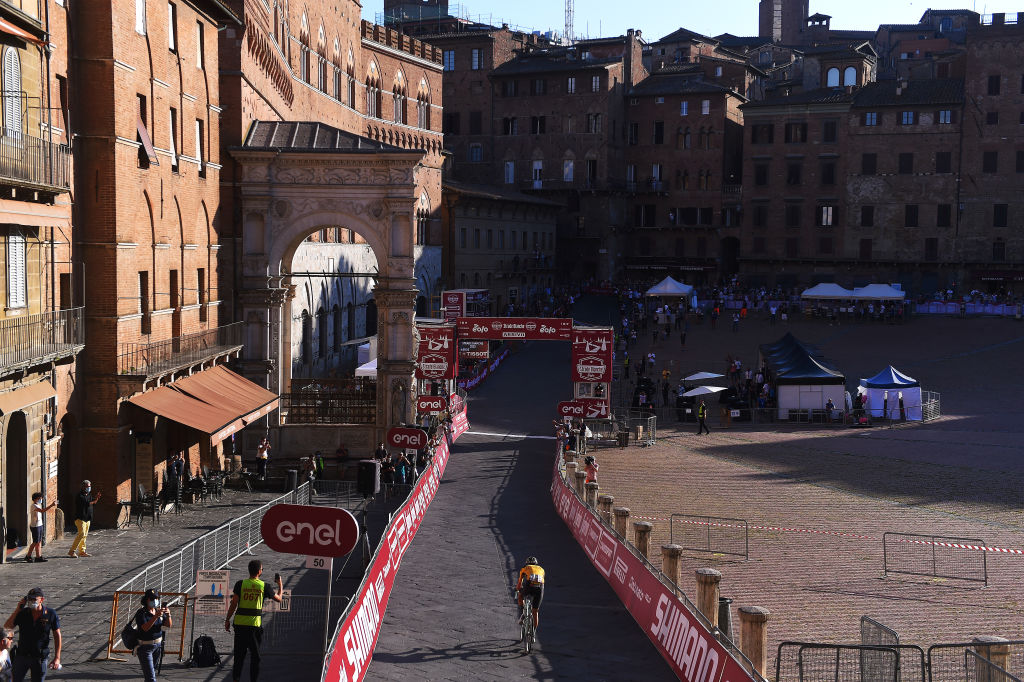
A lot has been made of how sports 'feel' in the era of COVID-19, with a lack of spectators now the accepted norm after football leagues around Europe restarted in May and June. Since the cycling season has got back up and running in July, we've become accustomed to empty roadsides greeting the peloton, too, although with no piped-in crowd noise to replace them.
Strade Bianche was no different, with few spectators dotted along the route – aside from some very much non-socially distanced crowds on Monteaperti and Le Tolfe. The effect was barely noticeable, at least until Van Aert was greeted by a desolate Piazza del Campo as he rolled in to finish.
Personally, I can't say that the lack of crowds took anything away from the experience, either, with the near non-stop action rendering any debate about a lack of atmosphere moot. With restricted crowds in prospect for some time to come, let's hope that high quality of racing remains throughout the season to keep that debate at bay.
Fuglsang's influence
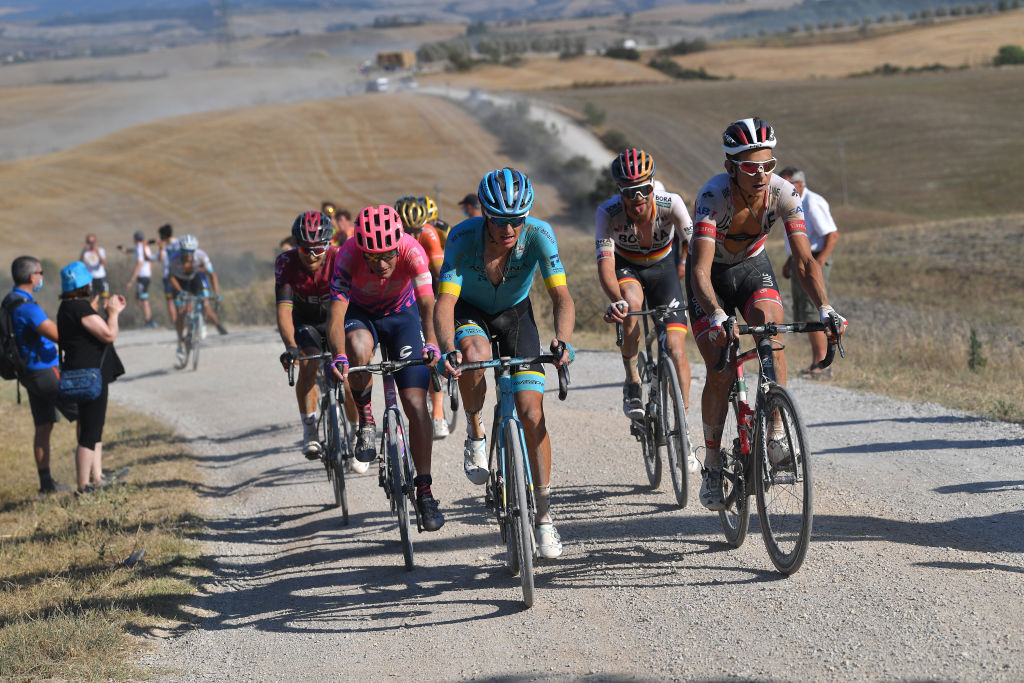
Jakob Fuglsang's late career upturn continued apace on Saturday. While the Dane may have registered a distant-looking fifth place at 1:31 down in Siena, he was arguably the main protagonist of the race as it blew apart 50 kilometres earlier.
He was up there as part of an attack, and then took the initiative as the peloton shattered to pieces on Monte Sante Marie. He then continued to push on the descent, putting his mountain bike skills to good use as he flew down, swearing at a camera moto that had been kicking up dust in his face along the way.
The 35-year-old would keep going for seven kilometres, never more than 20 seconds ahead of the chasers, but by the time the lead group came back together, the sextet were 1:50 clear of the rest.
While Fuglsang was unquestionably one of the strongest men of the day, he looked to have used up much of his energy in the wrong place, later having no answer when Van Aert made his decisive move. A question could be posed, however, about whether the group would have made it away so conclusively without Fuglsang to chase.
After second place last year, perhaps the Astana leader was a little too keen to leave his mark on the race this time around. We'll see a lot more of him this year, though, and he has already said that he loves the race and will "give it a new shot" next spring.
Dani Ostanek is Senior News Writer at Cyclingnews, having joined in 2017 as a freelance contributor and later being hired full-time. Before joining the team, she had written for numerous major publications in the cycling world, including CyclingWeekly and Rouleur. She writes and edits at Cyclingnews as well as running newsletter, social media, and how to watch campaigns.
Dani has reported from the world's top races, including the Tour de France, Road World Championships, and the spring Classics. She has interviewed many of the sport's biggest stars, including Mathieu van der Poel, Demi Vollering, and Remco Evenepoel, and her favourite races are the Giro d'Italia, Strade Bianche and Paris-Roubaix.
Season highlights from 2024 include reporting from Paris-Roubaix – 'Unless I'm in an ambulance, I'm finishing this race' – Cyrus Monk, the last man home at Paris-Roubaix – and the Tour de France – 'Disbelief', gratitude, and family – Mark Cavendish celebrates a record-breaking Tour de France sprint win.